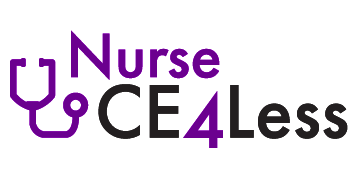Course Summary
Suicide is a leading cause of death in the United States. The literature on suicidology and large-scale studies conducted over the years suggest that there continues to be high rates of suicide among individuals with a mental illness and certain populations and social groups. Key studies and theories on suicidal risk factors and behaviors including an emphasis on modifiable risk, prevention and treatment are raised as important to primary health care and other medical and mental health professionals trained to provide initial and ongoing interventions between multiple inpatient and outpatient settings. The prevalence, risk and protective factors for suicidal thought and actions are discussed.
Course Format
Homestudy
Course Syllabus
- I. Introduction
- II. Overview of Suicide Prevention
- 1. Terminology
- III. Suicide Prevalence
- 1. Theories of Suicidal Behavior
- 2. Cognitive Stress Diathesis Model
- 3. Clinical Stress Diathesis Models
- 4. Neurobiological Stress Diathesis Model
- 5. Interpersonal Model of Suicidal Behavior
- 6. Research in Suicidology
- 7. Key Research Findings
- 8. Environmental Stressors
- 9. Lethal Methods/Impulsivity
- 10. Biological Bases of Suicide
- 11. Protective Factors for Suicide
- 12. Suicide and Mental Health Diagnoses
- 13. Mood Disorders and Suicide
- 14. Substance Use Disorders and Suicide
- 15. Schizophrenia and Suicide
- 16. Anxiety Disorders and Suicide
- 17. Sleep Disorders and Suicide
- 18. Violence/Trauma and Suicide
- 19. Borderline Personality Disorder and Suicide
- 20. Eating Disorders and Suicide
- 21. Traumatic Brain Injury and Suicide
- 22. Emotional Regulation and Suicide
- IV. Suicide Risk in Special Populations
- 1. Lesbian, Gay, Bisexual and Transgendered
- 2. Childhood Sexual Abuse
- 3. Elderly
- 4. Adolescents
- 5. Homelessness
- 6. Incarceration
- 7. Youth in Foster Care
- 8. Physicians
- V. Culture and Ethnicity: Risk Factors for Suicide
- 1. Native Americans/Alaska Natives
- 2. African Americans
- 3. Hispanic/Latinos
- 4. Asian Americans
- 5. Immigrants and Suicide
- VI. Assessing Suicidal Risk
- 1. Myths and Misconceptions About Suicide
- VII. Suicide Assessment Process
- 1. Current Presentation of Suicidality
- 2. Suicidal History
- VIII. Multi-Association Assessment Guidelines
- 1. Suicide Assessment
- 2. Therapeutic Rapport and the Initial Encounter
- 3. Outpatient Treatment
- IX. Psychopharmacology and Therapeutic Models
- 1. Lithium
- 2. Antidepressants
- 3. Antipsychotics, Ketamine, and Sedative-Hypnotics
- 4. Psychotherapy Models
- 5. Collaborative Assessment and Management of Suicidality (CAMS) Intervention
- 6. Cognitive Behavioral Therapy (CBT)
- 7. Dialectical Behavior Therapy (DBT)
- 8. Alliance-Based Therapy
- 9. Interpersonal Theory of Suicide (IPTS)
- X. Summary
Authors
Dana Bartlett, RN, BSN, MSN, MA, CSPI
Dana Bartlett is a professional nurse and author. His clinical experience includes 16 years of ICU and ER experience and over 27 years as a poison control center information specialist. Dana has published numerous CE and journal articles, written NCLEX material, textbook chapters, and more than 100 online CE articles, and done editing and reviewing for publishers such as Elsevier, Lippincott, and Thieme. He has written widely on the subject of toxicology and was a contributing editor, toxicology section, for Critical Care Nurse journal. He is currently employed at the Connecticut Poison Control Center. He lives in Wappingers Falls, NY.
Jennifer McAnally, DNP, PMHNP-BC
Jennifer McAnally holds a Doctor of Nursing Practice degree and specializes in the field of family psychiatry. She has worked in child and adult mental health and substance use treatment settings for over 10 years. She worked previously in academic research settings and as the medical device division manager of a biomedical firm and tissue bank. She has also worked in regulatory oversight of Medicaid programs at the state level. Jennifer’s earlier degrees include a Bachelor of Science in Nursing and Bachelor of Science in Microbiology with emphasis on whole-genome bioinformatics, both from Montana State University. Jennifer is a passionate activist in the field of mental health services, and is dedicated as a mother of two children, to family and to her community in Montana.


